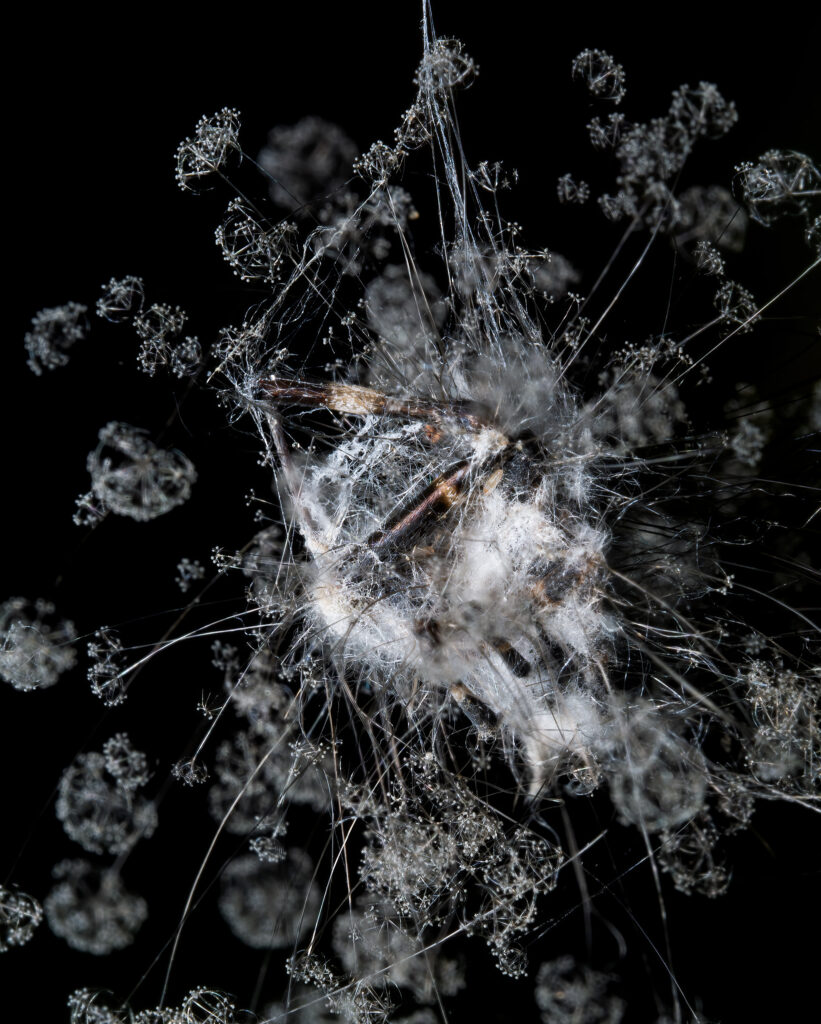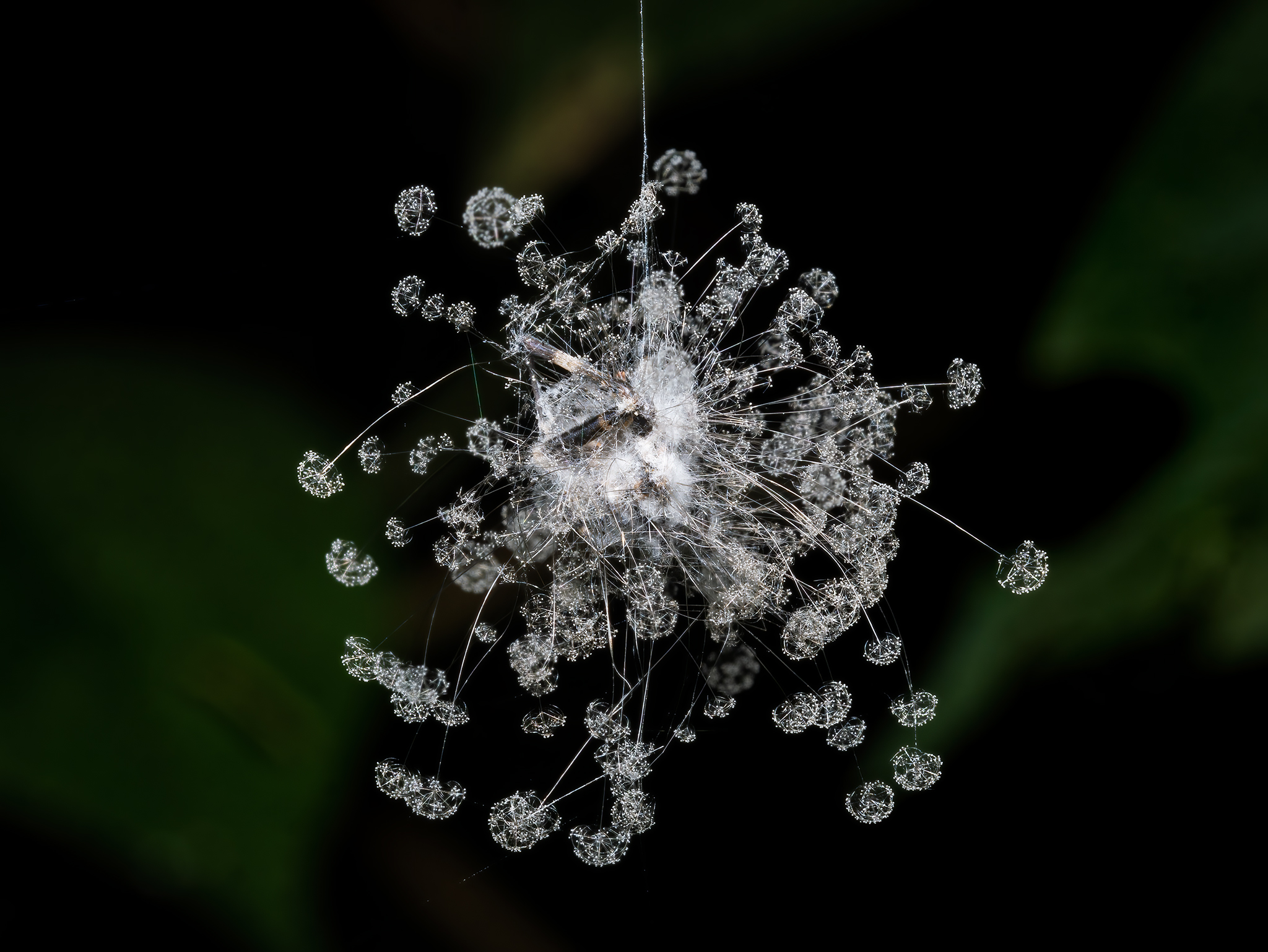Fungi all the way down…
If you’re a bit confused by what you’re looking at in these photographs – that’s okay. So was I, and to be honest, I still kind of am.
I took these photos on a recent camping trip in the Peruvian Amazon, and when I first spotted this bizarre scene, I was equal parts mesmerised and dumbfounded. It had some of the hallmarks of an entomopathogenic fungus – that is, a fungus that parasitises insects – but the strange little jellyfish-tree things were unlike the fruiting bodies of any fungus I’d ever encountered.


After speaking to anyone that I thought might be able to shed some light on the situation, and posting the photos to a bunch of different Facebook groups, this is the leading theory that I’ve been able to come up with…
One day, a spider was feeling a bit unwell, and decided to take a brief nap in the middle of its web. “Hopefully I’ll feel better when I wake up,” thought the spider.
But the spider never did wake up. An unknown entomopathogenic fungus killed the spider and began consuming it from the inside out – a fairly common event that happens countless times around the world every day. Not that big a deal. Fungus 1, Spider 0.
But that’s not where the story ends.

Unbeknownst to the fungus… the parasitiser was about to become the parasitisee. For you see, it too had been infected, by the rare and utterly enchanting Sporodiniella umbellata (progenitor of the cool jellyfish-trees!)
Sporodiniella umbellata is a special kind of fungus known as a hyperparasite – a parasite that parasitises other parasites. So what you’re looking at here is actually a fungus, which is growing out of another fungus, which is growing out of a spider.
The thing I love most about these photos is the way they demonstrate nature’s ability to be wholeheartedly ruthless and hypnotically beautiful in exactly the same moment.
Not to mention the rarity of it. I spoke to one expert on entomopathogenic fungi who told me that in his 30 years of research, having examined over 25,000 different specimens, he’s only encountered Sporodiniella umbellata a handful of times.
There’s no place on Earth quite like the jungles of the Amazon ❤️
–
Sporodiniella umbellata, Manu Biological Station, Peru


